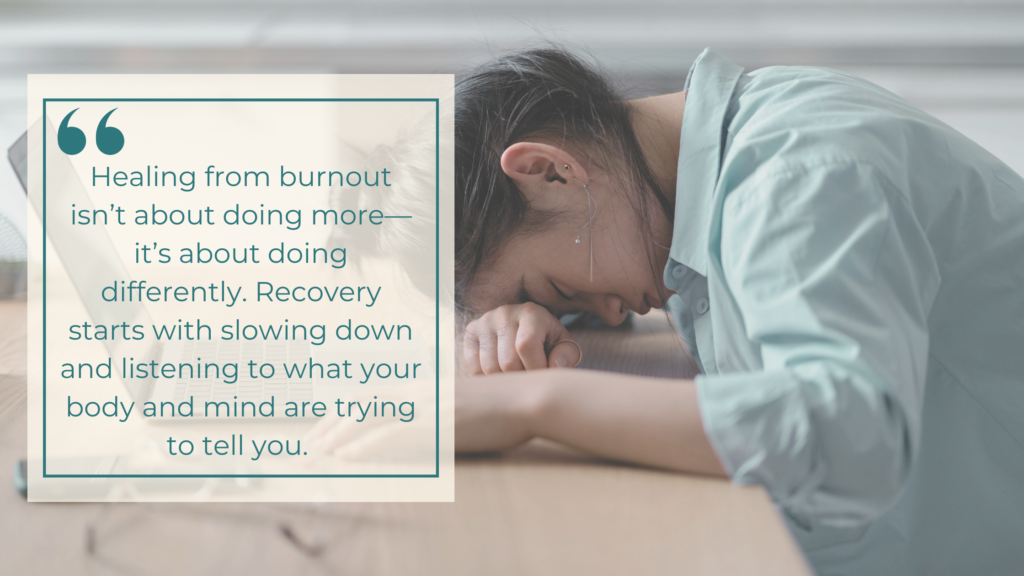
Burnout has become a familiar word in our modern vocabulary—especially for caregivers, professionals, and parents juggling endless responsibilities. But what does burnout actually feel like, and how can we recognize when we’re sliding into it? More importantly, how do we recover? In this blog, we’ll unpack the signs of burnout, its roots, and the small, meaningful ways we can begin to heal.
What Is Burnout?
Burnout is more than just feeling tired or stressed. It’s a state of emotional, physical, and mental exhaustion caused by prolonged and excessive stress. It often shows up as a deep weariness, a loss of motivation, or a sense of disconnection from things that once brought meaning or joy. You might feel numb, irritable, or like you’re running on empty—despite doing all the “right” things.
Who Experiences Burnout?
While anyone can experience burnout, it’s especially common among caregivers, educators, healthcare workers, therapists, and parents—people whose roles often centre around supporting others. Burnout can also affect those in high-pressure work environments, or those who have difficulty setting boundaries due to people-pleasing tendencies or perfectionism.
Signs of Burnout
Burnout can creep in slowly. Some common signs include:
Emotional exhaustion or feeling chronically drained
Increased cynicism or irritability
Feeling ineffective or unaccomplished, even when working hard
Trouble sleeping or constant fatigue
Loss of interest in activities you usually enjoy
Feeling disconnected—from your work, loved ones, or yourself
What Causes Burnout?
Burnout often stems from a mismatch between demands and resources. This might look like:
Working long hours without adequate rest
Emotional labour that goes unacknowledged
Lack of support—at work, in relationships, or in the systems we live within
High expectations without enough time, space, or compassion to meet them
Internalized pressure to be everything for everyone

Our Approach: Healing from Burnout
Healing from burnout isn’t about doing more—it’s about doing differently. Recovery starts with slowing down and listening to what your body and mind are trying to tell you. Some supportive steps may include:
Reconnecting to what feels nourishing—rest, nature, creativity, or meaningful connection
Practicing saying “no” and setting firmer boundaries
Seeking support—through therapy, supervision, peer support, or trusted relationships
Re-evaluating your values and priorities to realign your energy with what truly matters
Being gentle with yourself as you move at your own pace
You Are Not Alone
If you’re feeling burnt out, it’s not a personal failing. It’s a sign that something needs care—within you and around you. At The Therapy Collective, we offer support for those navigating burnout with compassion, practical tools, and space to process. Whether you’re a caregiver, a professional, or simply someone trying to hold it all together, you don’t have to do it alone.



